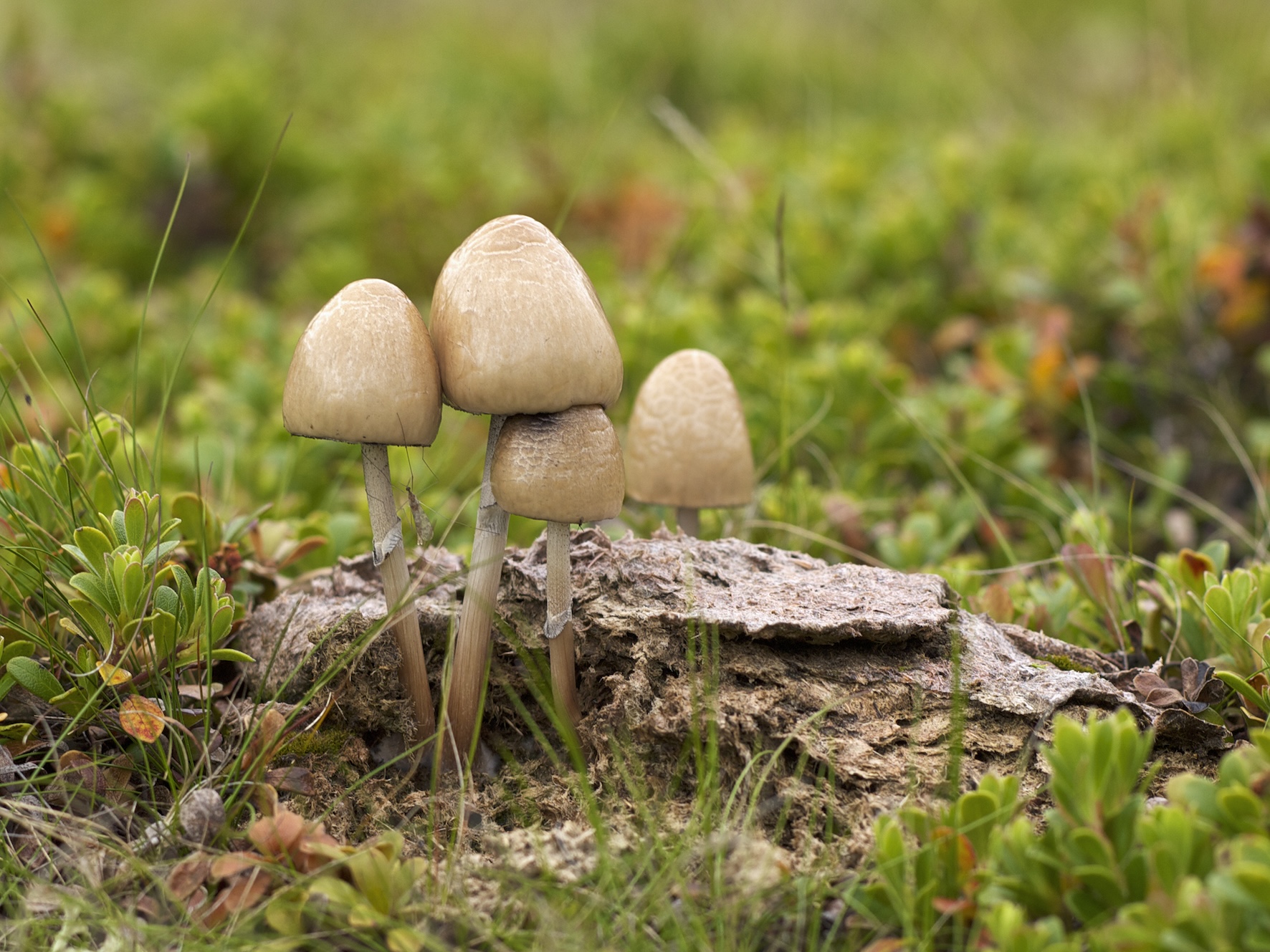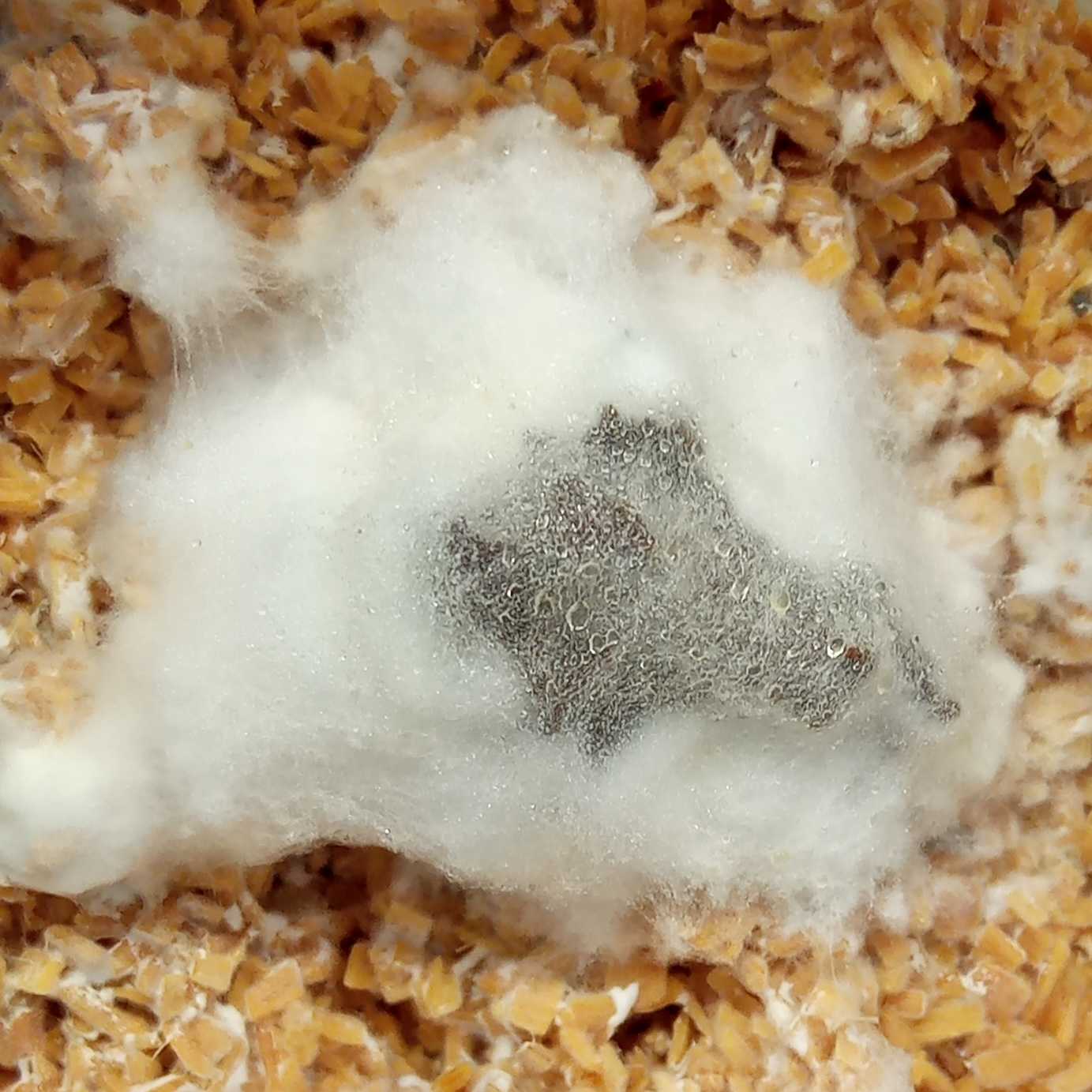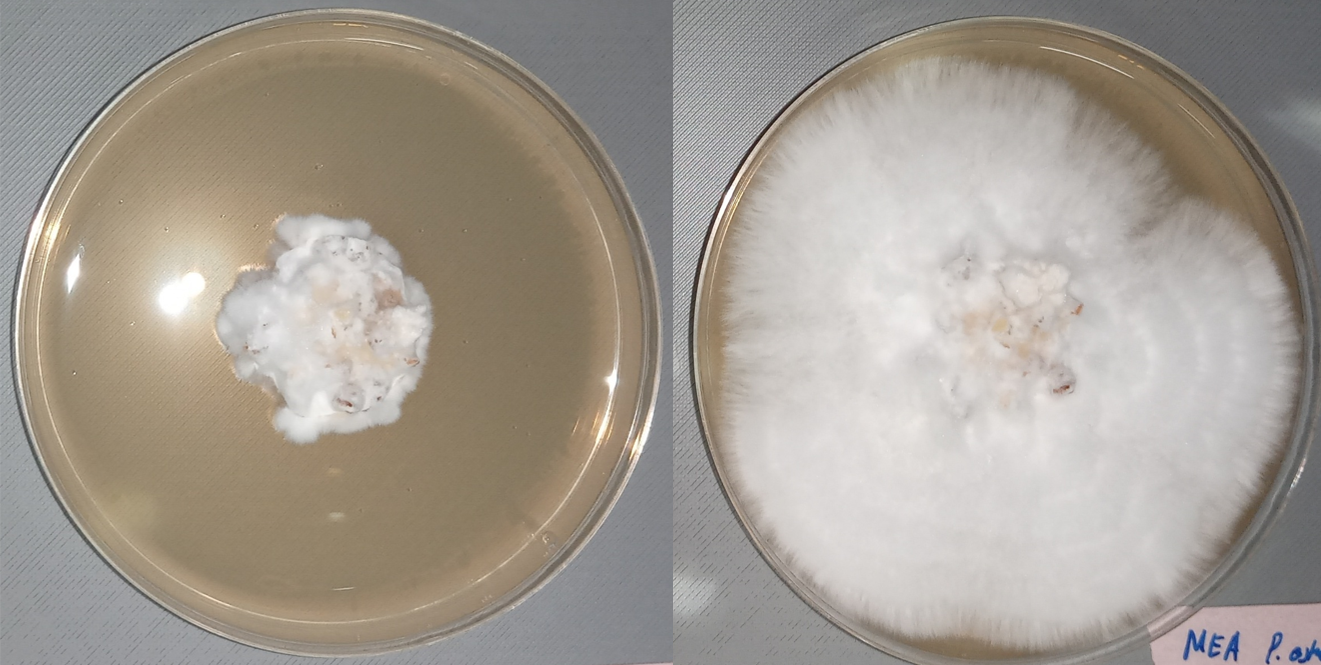Blog: Exploring Myco-sanitation: Why do a PhD on growing mushrooms on poop

It has been almost a year since I started my PhD, and I will soon present my research plan that will keep me busy for the next few years. This is a good time to reflect on how I decided to pursue a PhD and to share what I will be working on during this interesting time.
So, you might ask yourself: why are we thinking about growing fungi on faeces? Why is this relevant? After all, in Switzerland, we have sewered toilets and everything is nicely flushed away.
While this is true for high-income countries, it is not the case in low-income countries or remote areas where no sewage systems are available and people rely on pit latrines, septic tanks, or, in the worst case, practice open defecation. Unsafe sanitation is a cause of outbreaks of severe diseases like cholera and typhoid fever..
To be honest, a year ago I was not aware of these sanitation issues, nor did I think much about our sanitation systems, how we handle human waste, or how it is managed without highly developed, decentralized sanitation systems.
This changed when I saw an interesting-sounding PhD thesis announcement in my mailbox: “Mycelial Material for Pit Latrines.” As a mycologist, I was immediately interested when I read the word “mycelial.”
What does “mycelial” mean? Mycelium is a part of fungi. Fungi are one of the five kingdoms in biology. They are mostly known for their fruiting bodies, called mushrooms, or in the form of molds, which we recognize by their colorful conidia—the asexual form of spores. These well-recognizable, sometimes beautiful structures are actually just the tip of the iceberg. Below these structures, a network of thread-like structures spread. This network is used for accessing nutrients. It secretes enzymes to degrade complex molecules and make them available for the fungus, enabling its growth and further spread.
My fascination with fungi began when I first went foraging for edible mushrooms. Once you know about fungi, you start to see them everywhere and realize there is a diverse world you had previously ignored. Since then, I cannot cross even a small forest without looking at the ground all the time. In my studies as a microbiologist, I started taking every course that involved fungi, trying to learn as much as possible about these fascinating organisms.

There are fungal species adapted to almost every organic substrate—living or dead—found on our planet. These fungi play a crucial role in nutrient recycling, helping to break down organic matter and keep our ecosystems running.external page external page
There is also a set of fungi adapted to the faeces of animals. Dung is a nutrient-rich substrate, containing high concentrations of nitrogen and carbon. This concentration of nutrients makes dung a precious substrate. To outcompete competitors, dung-inhabiting fungi evolved to be fast and efficient in colonizing the substrate and reproduction. Their spores often possess thick, resilient cell walls that enable them to survive passage through the digestive systems of herbivores. Small fruiting bodies and fast colonization of the substrate allow them to quickly spread their spores before competitors arrive. Although many species of dung fungi have been described, the actual degradation process and how they influence bacteria within dung have rarely been studied.
The potential of fungi to reduce bacteria has been shown in different experiments. For example mycelium can remove E. coli and other pathogens from runoff water (external page Pini & Geddes, 2020). Fungi are known to produce antibiotics and are an evolving resource for screening new antibiotics (external page Bills et al., 2013; external page Hamers et al., 2021). It has also been shown that they can sense bacteria and activate antibiotic gene clusters in response (external page Kombrink et al., 2019).
However, the direct influence of fungi on bacterial concentrations in faeces or dung is mostly unexplored. Some studies have shown that fungi are involved in the degradation of herbivore dung (external page Calaça et al., 2024). While this research suggests they could be helpful in the sanitation context by reducing fecal mass or lowering bacterial concentrations, this has never been tested in detail neither in animal dung nor in human faeces. With this PhD, we want to step into this interesting research field and explore the potential of fungi to be used in the sanitation of human faeces. In some preliminary experiments, I observed that certain fungi are actually able to grow on human feces, covering the surface with a dense net of mycelium (Figure 2). As I now shift from planning to actual lab experiments, I hope to soon present some interesting findings.

The experiments will be distributed in three main parts:
First, I will develop an assay that screens for fungal species that are able to grow on human feces. I will measure their growth speed and how they influence the naturally occurring coliform bacteria. To measure the growth speed we will use image analysis measuring the spread of the mycelium in a certain time interval (Figure 3). This assay will allow the selection of promising fungal candidates to be used for the follow up experiments.

The second part will focus on whether the successful species from the first part can also decrease the concentrations of added pathogens relevant for outbreaks of diarrheal disease (e.g., Vibrio cholerae, Salmonella enterica). These pathogens were responsible for more than 340,000 child deaths in 2021 (external page IHME, Global Burden of Disease, 2024). In order to make disposal or reuse in agriculture, safe faecal material has to be free of these pathogens.
The third part will focus on how fungal growth influences the physical parameters in faeces such as dry weight after incubation, pH-value of faecal material, and total carbon and nitrogen content. Further I will test how tolerant this fungal system is to environmental stress like high or low water content or high concentrations of ammonium.
We will see if these fascinating organisms can help us make sanitation accessible and safe for everyone. Follow my research here.
Bills, G. F., Gloer, J. B., & An, Z. (2013). Coprophilous fungi: Antibiotic discovery and functions in an underexplored arena of microbial defensive mutualism. Current Opinion in Microbiology, 16(5), 549–565. external page https://doi.org/10.1016/j.mib.2013.08.001
Calaça, F. J. S., Araújo, J. C., de Melo e Silva-Neto, C., & Xavier-Santos, S. (2024). A microcosmic experimental overview of durability and nutritional aspects of feces to dung-inhabiting fungi development. Scientific Reports, 14(1), 30334. external page https://doi.org/10.1038/s41598-024-82059-6
Hamers, V., Huguet, C., Bourjot, M., & Urbain, A. (2021). Antibacterial Compounds from Mushrooms: A Lead to Fight ESKAPEE Pathogenic Bacteria? Planta Medica, 87(5), 351–367. external page https://doi.org/10.1055/a-1266-6980
IHME, Global Burden of Disease (2024). (2024). Our World in Data. external page https://ourworldindata.org/grapher/number-of-deaths-from-diarrheal-diseases-by-risk-factor-for-under-5s
Kombrink, A., Tayyrov, A., Essig, A., Stöckli, M., Micheller, S., Hintze, J., van Heuvel, Y., Dürig, N., Lin, C., Kallio, P. T., Aebi, M., & Künzler, M. (2019). Induction of antibacterial proteins and peptides in the coprophilous mushroom Coprinopsis cinerea in response to bacteria. The ISME Journal, 13(3), 588–602. external page https://doi.org/10.1038/s41396-018-0293-8
Pini, A. K., & Geddes, P. (2020). Fungi Are Capable of Mycoremediation of River Water Contaminated by E. coli. Water, Air, & Soil Pollution, 231(2), 83. external page https://doi.org/10.1007/s11270-020-4464-7